|
Genres, Themes, Actors, and Directors:
- Ancient Greece and Rome
- Biblical Stories
- Character Arc
- Christianity
- Dean Jagger Films
- Historical Drama
- Jean Simmons Films
- Religious Faith
- Richard Burton Films
- Slavery
- Victor Mature Films
Review:
Best known as the first film released in CinemaScope, this adaption of Lloyd Douglas’s best-selling historical novel about the crucifixion of Jesus Christ looks impressive in widescreen, and makes fine use of vivid Technicolor. Indeed, it won Oscars for art direction and costume design (in color), and was nominated for best cinematography. As biblical epics go, it’s refreshingly focused on a journey of personal faith; one gets a strong sense of how persecuted early Christians were for their loyalty to Christ’s teachings, and why they were willing to sacrifice everything for their religion. Less convincing is Robinson as a snivelling, child-like Caligula; he opts for over-the-top theatrics when much less would serve equally well.
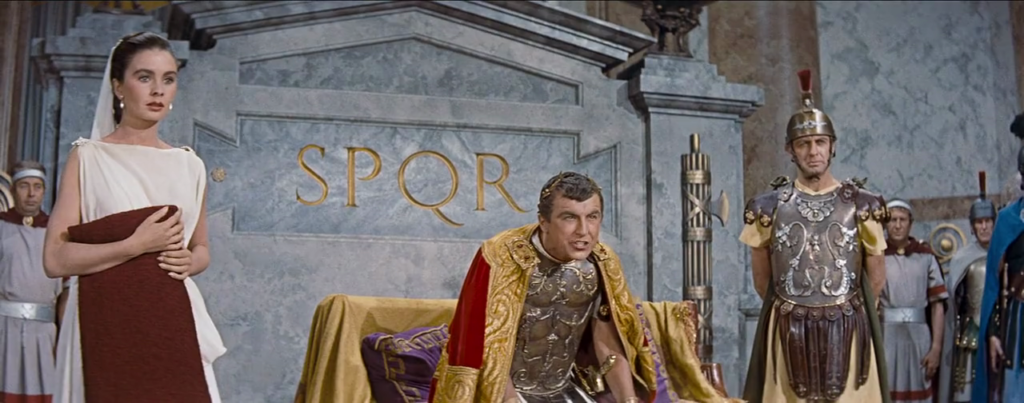
Burton’s Oscar-nominated, impassioned performance is impressive, however, and his on-screen chemistry with Simmons (borne out in real life) is potent.

Ultimately, however, this one is only must-see viewing for fans of the genre or those who like to watch all Oscar winners.
Redeeming Qualities and Moments:
- Fine use of Technicolor CinemaScope
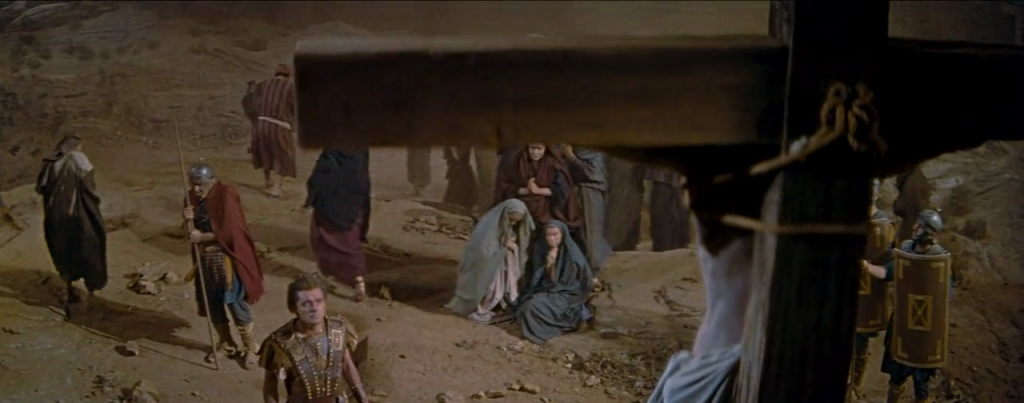

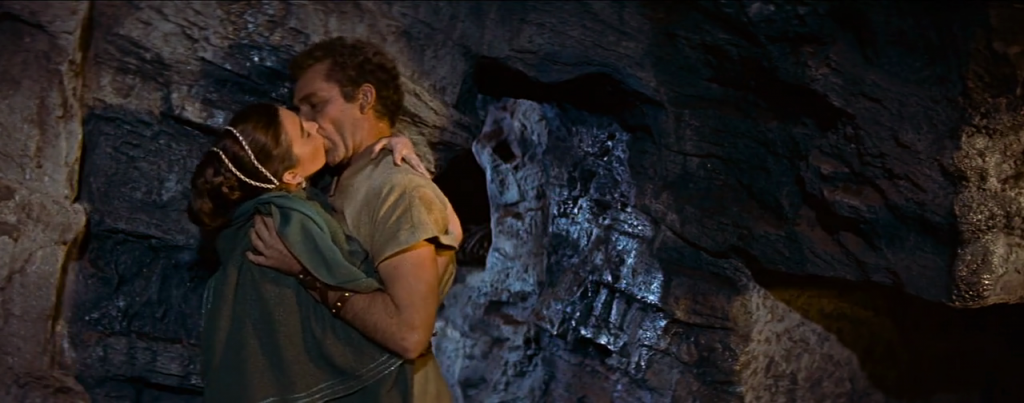
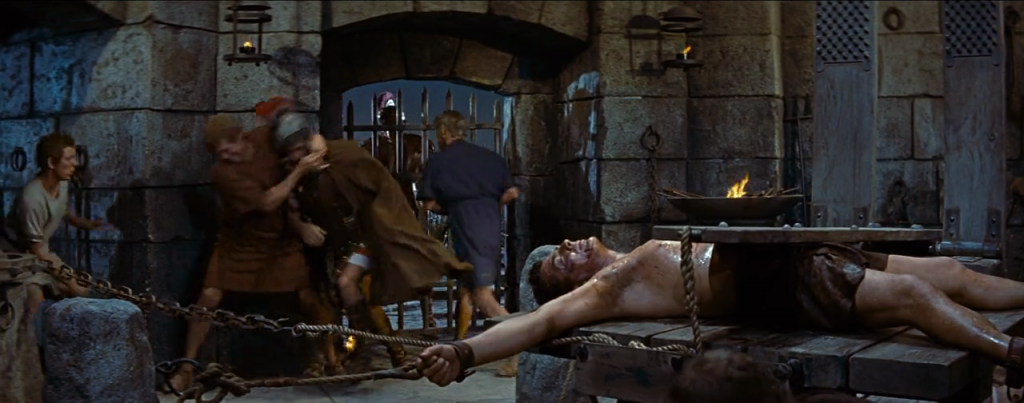
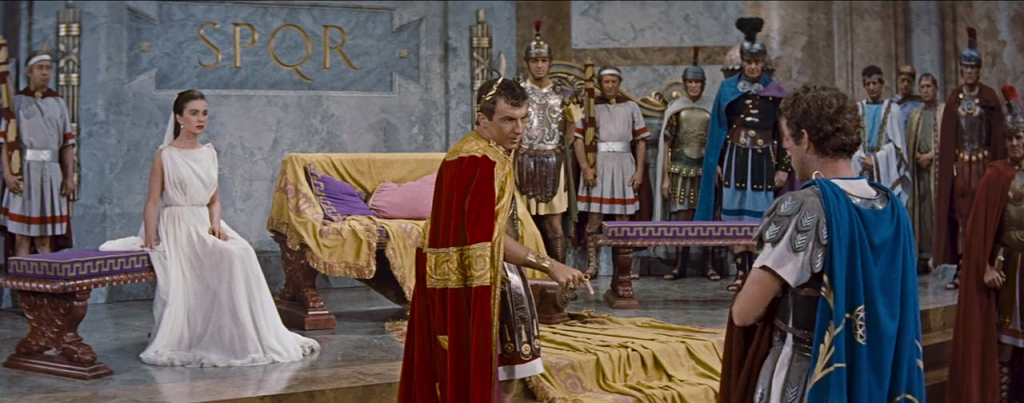
Must See?
No, though it’s certainly worth a look for its historical relevance.
Links:
|
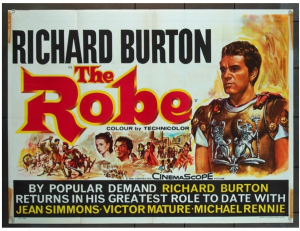







One thought on “Robe, The (1953)”
Must-see, for its place in cinema history. I just posted on this in ‘The ’40s-’50s in Film’ on facebook:
[“Because men are weak. Because they are cursed with envy and cowardice. Because they can dream of truth – but cannot live with it.”
‘The Robe’ (1953): The last time I saw this film, I was a kid watching it via ‘a small box’ in a pan-and-scan print – hardly the way to watch the first CinemaScope film. No doubt it was also cut to fit a 2-hour-with-commercials slot. (The film is 135 minutes.) So this is the first time I actually *saw* this movie properly.
And it’s not bad. Quite a few religious epics are, frankly, barely watchable – not only are they corny but they’re badly written, etc. ‘The Robe’ is not only rather compelling but it’s largely believable. Perhaps because it doesn’t over-play its hand. If it feels a little long, that’s because it falls prey a bit to some Hollywood staples: a few sword fights, one long chase sequence, etc. But essentially it’s reverential without being cloying; it wants to tell a good story. And sometimes it’s gripping indeed; the crucifixion sequence is downright creepy.
Reportedly, Richard Burton hated the shoot – mainly because he wasn’t used to making films and was self-conscious (he still copped an Oscar nom). But I rather enjoyed seeing some of the actors in supporting roles: Victor Mature (not known for being a great actor) has a few very effective moments; as Caligula, Jay Robinson appropriately screeches like fingernails on a blackboard; Richard Boone is memorable as Pilate (even if the role is small); Ernest Thesiger (famous for his turn in ‘Bride of Frankenstein’) is very stately as Emperor Tiberius and is given some wonderful things to say (“After 40 years with [my wife] Julia, my approaching death holds few terrors for me.”, etc.).
‘The Robe’ cost 4 million to make, was the 4th-highest-grossing film of the ’50s – and a terrific ‘making of’ doc on the DVD tells a fascinating tale of the long road it took getting the spiritual novel its unique place on the first CinemaScope screen.]